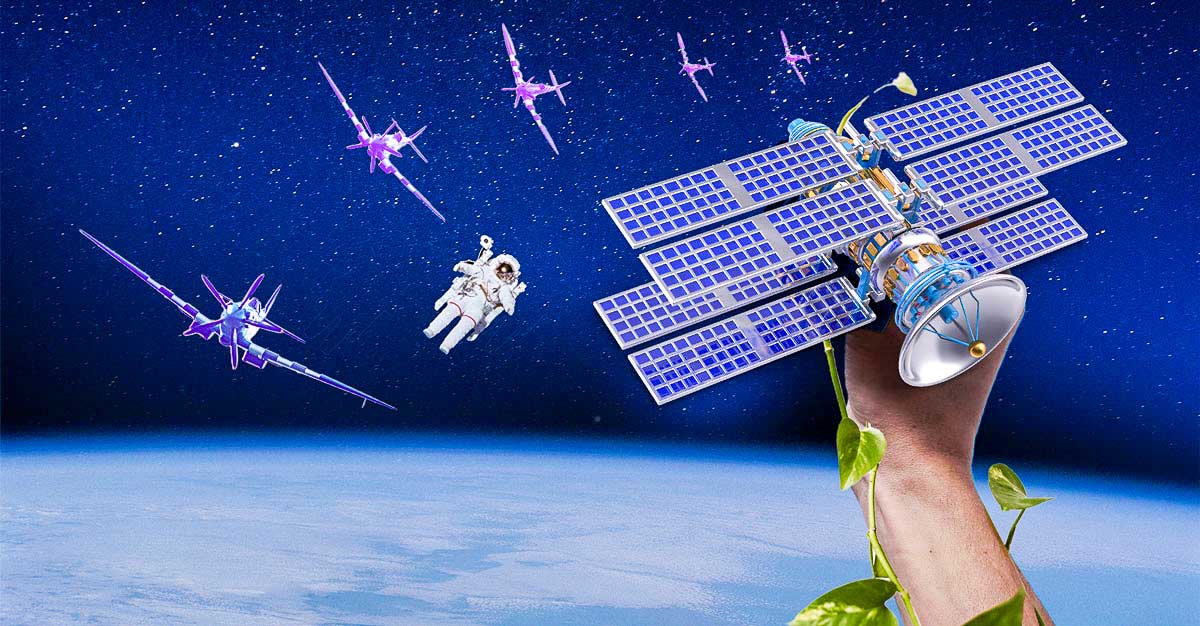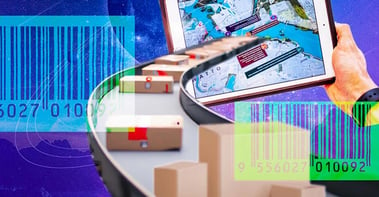The aerospace industry has historically been a paragon of innovation. Inventions from aviation and space agencies over the past 60 years have led the way for some of the most groundbreaking, innovative technologies we currently use on Earth.
Space agencies have been at the forefront of breakthroughs across various sectors—from the development of Mylar technology that helps insulate electrical systems to digital signaling technology that led to the development of CAT scans and MRIs in the medical field. This trend is set to continue, with aerospace undergoing several seismic changes in the coming decades.
The next aerospace era is being dubbed the “space economy,” a phase underpinned by two themes—sustainability and self-sufficiency. This period will require key cross-industry collaborations, most notably new partnerships between space agencies and emerging startups offering products that enable scalable aerospace independence.
In this blog, we’ll present some of the forces shaping the future of the aerospace industry, along with key trends, game-changing technologies, and practical industry applications, highlighting how organizations are finding and leveraging innovative opportunities.
Forces shaping the future of the aerospace industry
1. De-anchoring from earth
The future of aerospace may include a space economy in which transactions are aerospace-centric and do not require as much intervention from Earth as previously. Aerospace economists foresee the normalization of initiatives such as spacecraft refueling in space, either in orbit or on the moon, in the coming years. A further untethering of operations from Earth will see the availability of materials in space or on the moon. Similarly, capabilities like 3D Printing and producing vital technology in space may be critical to creating a self-sufficient space value chain.
Technologies such as Responsive Materials will be vital in creating autonomous operations with their ability to self-repair without direct intervention from humans. Often incorporated into Biomimetic Devices, Responsive Materials can automatically sense failure or breakdown, halt the process or stop it from worsening, and then repair the damage as soon as possible. These materials, utilized with other technologies such as Predictive Maintenance technologies, will be instrumental in de-anchoring aerospace activities from Earth.
|
2. The aero-skills gap
Expect a surge in the diversity of skills required in aerospace as the variety of space services expands in the coming decades. Projects such as the NASA Artemis Moon Mission or the various Mars colony missions will require professions not traditionally associated with STEM. These include biological researchers, contract lawyers, political scientists, and financial analysts. A barrier that the aerospace industry may have to overcome is luring away top talent from more sought-after tech companies with greater cultural capital amongst millennials and Generation Z.
Trends such as Diverse Perspectives underscore the need for various backgrounds and competencies to execute ambitious aerospace projects while keeping an eye on sustainability. Space agencies can develop partnerships with cross-sectoral organizations, crowdsources ideas, and engage in co-creation to enhance their ability to approach challenges innovatively.
|
3. Space R&D
With new players entering aerospace, various opportunities exist for experimentation in developing scientific solutions not possible on Earth. SpaceX's 2021 Dragon mission to the International Space Station conducted experiments such as Targeting Improved Cotton Through On-orbit Cultivation (TICTOC) to develop tougher cotton varieties and microgravity's effect on microbes in the development of on-the-spot ultrasounds. These experiments could have groundbreaking effects on manufacturing, biological research, and medicine. The SpaceX Dragon mission and others like it are harbingers of future R&D space projects that have the potential to influence and alter several non-aerospace sectors significantly.
Space agencies will increasingly need to prioritize Diversified Value to harness other industries' financial resources through mutually beneficial experiments and aerospace projects.
|
4. Low earth orbit technology
The historically dominant Geostationary Orbit (GEO) is under commercial threat due to innovations in Low Earth Orbit (LEO) and Middle Earth Orbit (MEO) technologies. Expect a steady rise in the number of new players raising venture capital in the billions and whose unique launch system product offerings will drive down the cost of orbit systems, in general, and LEOs, in particular. As much as unanchoring from Earth will be part of the space economy in the next two decades, services such as direct-to-consumer broadband internet mean there are still lucrative opportunities tethering space to Earth-specific needs.
Private companies will continue to enter aerospace, capitalizing on opportunities and creating new ones through novel partnerships and cutting-edge technologies. As more players enter the industry, technologies that reduce costs and increase accessibility, such as Nanosatellites, will be vital to initiating and diversifying various space activities.
|
5. Sustainability in aviation
Organizations in the aerospace and aviation sector are not exempt from ESG and sustainability imperatives. Commercial aviation is expected to account for around 20% of global greenhouse emissions by 2050. Commercial aviation bodies such as the International Air Transport Association (IATA) and International Civil Aviation Organization (ICAO) will need to proactively accelerate ESG regulations to mitigate the industry’s greenhouse emissions contribution and avoid imposed ‘regulation fiats’ from governments.
Technological breakthroughs in areas like Energy Harvesting, Green Hydrogen, and Next-Gen Batteries are vital to achieving future sustainability targets. Funding and leveraging these advancements to enhance sustainability in aerospace and aviation requires targeted ESG Investing and a consistent flow of capital into green ventures.
|
6. Cooperative aerospace governance
Aerospace initiatives have been historically influenced by nation-states vying for supremacy. While innovations in aerospace can be a net positive for humanity, they can also be sources of geopolitical tensions. Even though space agreements such as the Outer Space Treaty exist, new cooperative, legally binding contracts will be needed to account for emerging issues in aerospace.
With the Space Race 2.0 underway, the aerospace industry is likely to see the continuation and strengthening of mutually binding and mutually beneficial coalitions across various fields of study and borders. Satellite launches, servicing, and space traffic control are issues of growing importance, with overcrowding in space being one of the most pertinent. For instance, mitigating space debris and tracing the global aerospace supply chain will be critical on the space treaty agenda.
|
Finding innovation opportunities in the aerospace industry
Applying an industry lens to the process of environmental scanning helps your foresight teams direct their focus and resources more optimally. By gaining an understanding of the technological developments and trends that may present future opportunities in your industry, you can equip yourself with the foresight intelligence needed to take decisive, strategic action and, ultimately, gain a competitive advantage.
Get started by exploring the ITONICS Technology Radar and Trend Radar for the aerospace industry. These analyst-curated radars display the drivers of change that are most relevant and impactful for the industry.
Have more time?




